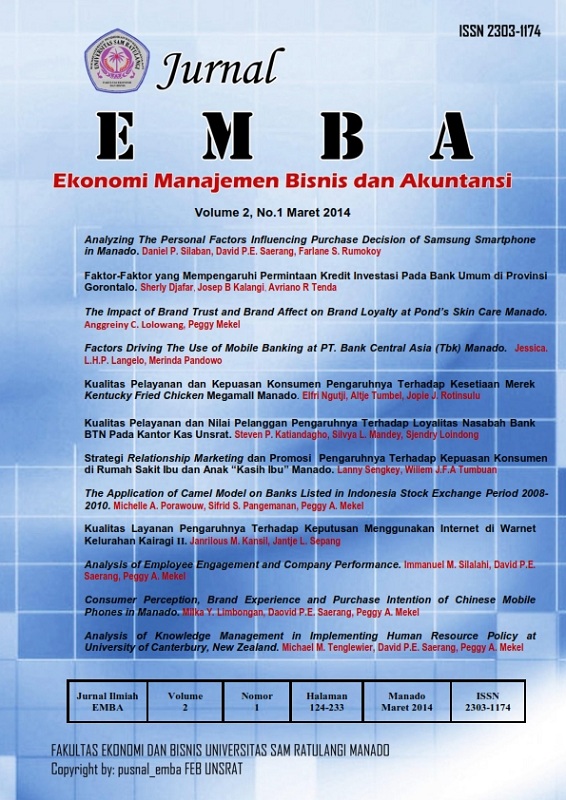THE APPLICATION OF CAMEL MODEL ON BANKS LISTED IN INDONESIA STOCK EXCHANGE PERIOD 2008-2010
DOI:
https://doi.org/10.35794/emba.2.1.2014.3581Abstract
Bank is an institution that serves as a financial intermediary between the parties who have funds with those who need funds as well as an institution that serves smooth traffic flow payments. The objectives of this research are mostly to analyze the influence of CAMEL model effect simultaneously on earnings and to identify the most significant factor of CAMEL model partially on earnings in go public banks listed on Indonesia Stock Exchange 2008-2010 periods. Meanwhile, types of the research that used in this paper are causal-comparative study and Multiple Linear Regression. Data used in this study is a secondary data that is obtained from the journal of research affiliated with CAMEL ratio such as: Capital Adequacy Ratio (CAR), Asset Quality (AQ), Operating Expense to Operating Income (OEOI), Loan to Deposit Raito (LDR) and the financial statements data from 15 banking companies listed in Indonesia Stock Exchange during 2008-2010. Hypothesis test shows that there are an influence simultaneously and partially of Capital Adequacy Ratio (CAR), Assets Quality, Operating Expense to Operating Income (OEOI), and Loan to Deposit Raito (LDR) on profitability. However, both of every bank managers and the researcher need to recover more indicators to clearly perceive an accurate level of approaches in terms of measuring the bank’s healthy.
Keywords: CAMEL model, profitability

